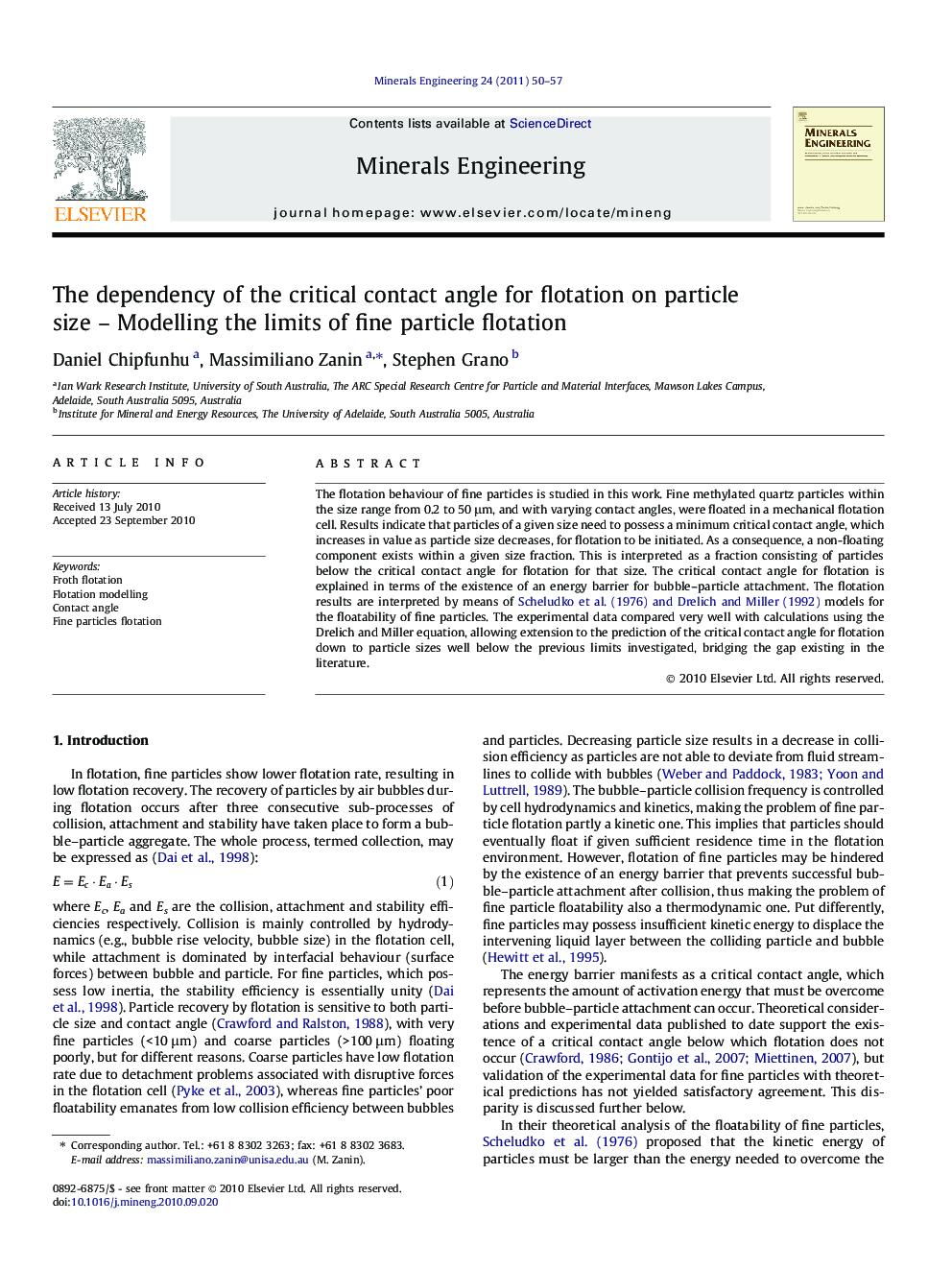| Article ID | Journal | Published Year | Pages | File Type |
|---|---|---|---|---|
| 234194 | Minerals Engineering | 2011 | 8 Pages |
The flotation behaviour of fine particles is studied in this work. Fine methylated quartz particles within the size range from 0.2 to 50 μm, and with varying contact angles, were floated in a mechanical flotation cell. Results indicate that particles of a given size need to possess a minimum critical contact angle, which increases in value as particle size decreases, for flotation to be initiated. As a consequence, a non-floating component exists within a given size fraction. This is interpreted as a fraction consisting of particles below the critical contact angle for flotation for that size. The critical contact angle for flotation is explained in terms of the existence of an energy barrier for bubble–particle attachment. The flotation results are interpreted by means of Scheludko et al., 1976 and Drelich and Miller, 1992 models for the floatability of fine particles. The experimental data compared very well with calculations using the Drelich and Miller equation, allowing extension to the prediction of the critical contact angle for flotation down to particle sizes well below the previous limits investigated, bridging the gap existing in the literature.
Graphical abstractExperimental and modelled critical contact angle versus particle size.Figure optionsDownload full-size imageDownload as PowerPoint slideResearch highlights► Correlation between particle contact angle and size and the flotation recovery is shown. ► A critical contact angle for flotation exists, which increases as the particle size decreases. ► Good agreement was found between the experimental data and a theoretical model. ► Accurate prediction of the critical contact angle for flotation for particles ranging form 30 μm to less than 2 μm is provided.
